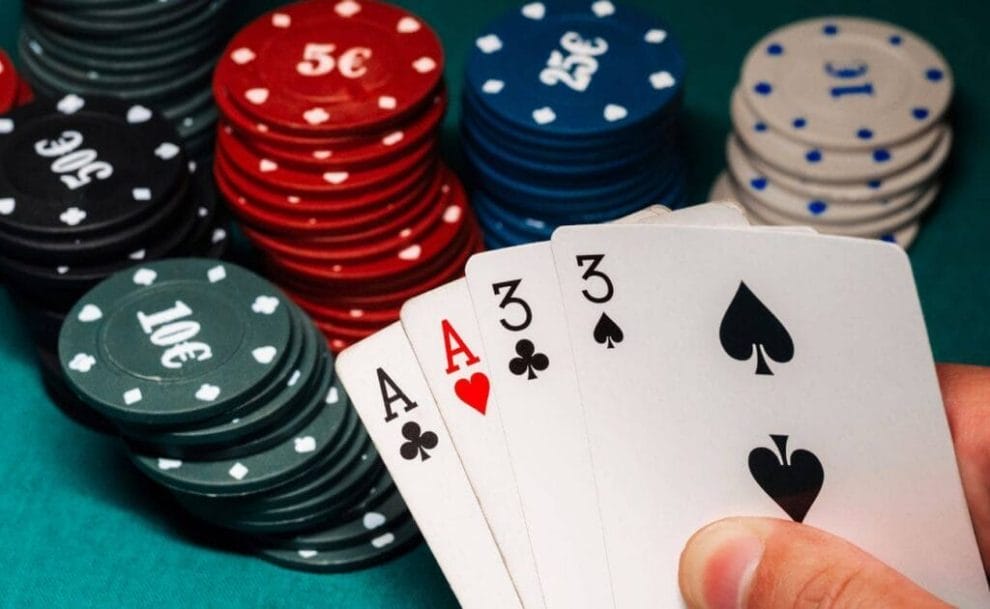
The big blind is one of the most important positions to master when you play poker online. Statistically, you’ll see more flops playing from the blinds than from anywhere else at the table. As a result, the ability to defend the big blind is a must if you’re serious about developing your skills in online poker. In this blog, you’ll learn the reasons to defend big blinds in poker and discover some poker strategy tips for doing it successfully.
Why Defending the Big Blind Is Important
So what is a big blind in poker, and why would you want to defend it? Simply stated, it’s the second and larger of the two forced bets placed in the preflop betting round. In poker, big blinds and small blinds ensure that there’s always something to play for in the pot. The small blind sits one position to the left of the dealer, and the big blind sits to the left of the small blind. This means the big blind closes the action preflop. As a result, the big blind gets to act last after seeing what everyone else has done. As big blind, players can’t reraise you preflop, so you can afford to call more often. This is a strong argument in favor of big blind defense.
Another argument is that you already have a big blind invested in the pot. This may not seem like much in a No-Limit Hold’em 2 (NLH) game where the small and big blinds are $0.01 and $0.02, respectively, but at a standard NLH 200 live game, you’re losing $2 every time you surrender your big blind. In the later stages of poker tournaments, the default cost is even higher when the antes kick in to juice the pot.
What’s more, you need less equity to call from the big blind preflop than in other positions. Say a middle position player raises to three times the big blind. The button would need 40% equity to call in this situation, but the big blind only needs 31%.
In other words, the big blind can afford to play more loosely than their opponents. Acting last and playing loose also allows you to disguise your holdings, so you can potentially spring some nasty traps on your opponents on later streets.
Now that you know why defending the big blind is worthwhile, here are some tips to help you master the big blind position.
1. Fight for the Antes

In poker tournaments, antes make every pot worth fighting for. As a result, when defending from the big blind, it’s a good idea to open up your calling range. If you find yourself short-stacked (your stack is 30 big blinds or less), you should be prepared to go all in on a 3-bet with any suitable hand (any pair, ace-king to ace-jack, ace-10 to 10-9 offsuit, ace-4 to ace-2 offsuit, 10-9 to 10-7 suited). This move will often boost your stack and give you the chance to extract maximum value with a strong hand.
2. Call When Short-Stacked
Many players believe shoving or folding is the only correct response to a raise when short-stacked with 6 to 15 big blinds in a poker tournament. This isn’t always true, as the big blind’s favorable pot odds mean it’s often correct to call. If you’re facing a small raise with a hand that’s too weak to shove but too strong to fold, considering the pot odds, it’s a good move to call.
3. Take Advantage of the Small Blind
In cash games, the small blind tends to raise more frequently when the action folds to them. That’s because they only need to get past one player to win the pot: you. This gives you all the more reason to defend your blind. You have position on them, their range is wide, you’ve already invested in the pot, and the pot odds work in your favor.
4. Tailor Your Range to Your Opponent

In cash games, you have the opportunity to develop reads on opponents in the same pool of players, so you can adjust your big blind defense strategy accordingly. Say you’re facing a raise from a player you know to be extremely tight. Naturally, you’re going to tighten your range. However, against someone who raises far too many hands, you’re going to fight unless you really have nothing.
5. Defending the Big Blind in Multiway Pots
The preceding tips apply primarily to two-way pots. If one or more players have already called the preflop raise, you must tweak your strategy. First, realize that getting equity from multiple players is difficult, meaning you need to tighten your defending range. Generally, you should fold unless you have a hand that does well in multiway pots. These are hands such as pocket pairs and suited and connected hands that stand a good chance of making a two pair or better on the river. Avoid playing drawing hands with large gaps.
Experience Borgata Online Poker
Looking for a top-rated site to play poker online? At Borgata Online, you can enjoy a premium poker experience when in New Jersey and Pennsylvania, at any time, and on any device. Register to play cash games and join online poker tournaments with stakes and buy-ins to suit every player.
